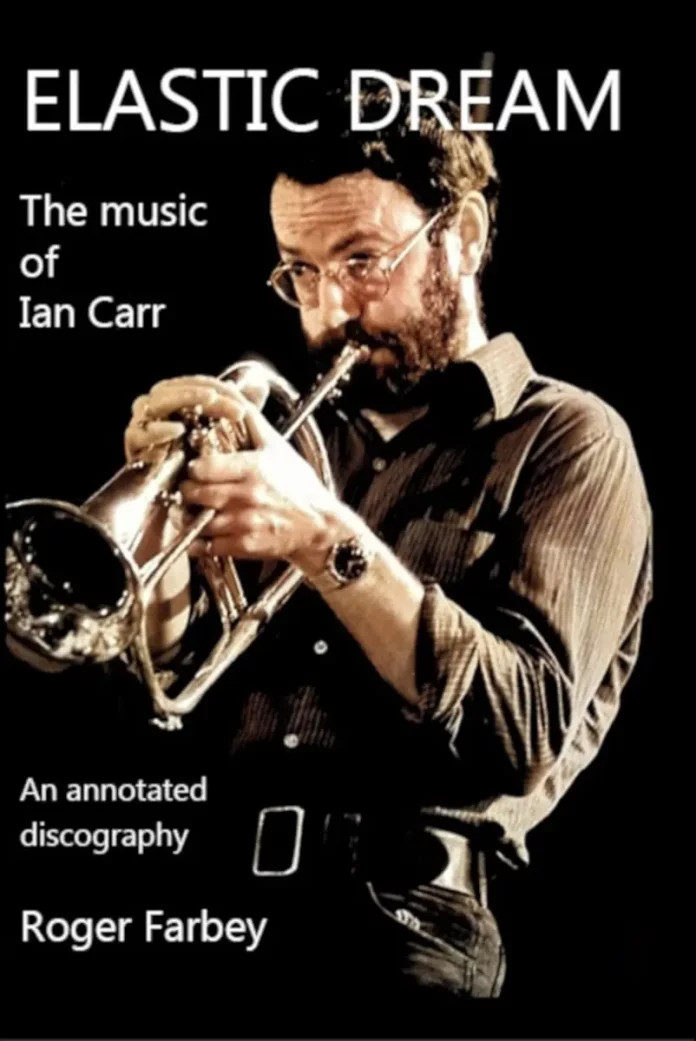In the introduction to this third edition of Roger Farbey’s book dissecting the discography of Ian Carr, there’s a line from jazz musician and cartoonist Barry Fantoni whose opinion was that Carr was a better trumpeter than Miles Davis. While some may refute Fantoni’s judgment, it can certainly be argued that Carr was as diverse as Davis in his approach and the directions he would take his instrument, as the varying musical situations he found himself in through his protracted career prove.
Indeed, the Dumfries-born Carr quickly formed a formidable reputation and following in much the same way his heroes did: through connecting with his audience, challenging himself musically and embracing change. As Farbey’s writings here highlight, the music Carr made between 1960 and his untimely passing in 2009 saw his style and sound frequently flip – from his early years playing bop in Newcastle to the radical modern jazz he committed to disc with Don Rendell, his big band work with the New Jazz Orchestra, freebop with Jeff Clyne and the progressive Jazz-rock fused with Nucleus. Then of course were the other musical avenues he explored as an in-demand session man for such notables as the Alan Price Set, Roy Budd, Mike Hugg, Acker Bilk, Nico, No-Man, Herbie Hancock and Keith Tippett amongst many others.
Farbey’s book – retitled Elastic Dream after the 1970 Nucleus album – naturally digs much deeper than the music Carr cut with the above artists. Over 200-plus pages and promising to be the most complete resource of Carr’s recorded work, the discography is split into two parts. The first covers his early years and (official and private) recordings running up to 1970 with Rendell/Carr Quintet, Michael Garrick, Neil Ardley, New Jazz Orchestra, Nucleus, John Stevens, Amancio D’Silva and Joe Harriott amongst others. The second spills informative, and descriptive details on post-2003 archival releases and the many sessions that have surfaced since Carr retired from recording.
The book also packs in a list of Carr’s numerous nominations and awards in the Melody Maker polls during his 60s and 70s heyday and also a detailed record of Carr’s published works as a writer, the many books available on the man and his music and, in the final pages, a roundup of Carr’s many appearances and achievements in broadcasting.
Well researched and presented by a writer and major fan who personally knew Carr, Elastic Rock reads like a labour of love and is a fitting accompaniment to Alyn Shipton’s 2006 Carr biography. It does precisely what it sets out to do: disclose fresh insight on the subject and motivate the reader to discover or further investigate the music, of which there is a great deal to dig out, dust off and dig deep for. Equally enjoyable is the included 80-minute CD, packed with rare or never-before-heard gems selected by Farbey that brilliantly soundtrack this revealing resource.
Elastic Dream – The Music Of Ian Carr: An Annotated Discography, by Roger Farbey. Jazz in Britain, 208 pp. ISBN 978-1-9163206-5-9
















